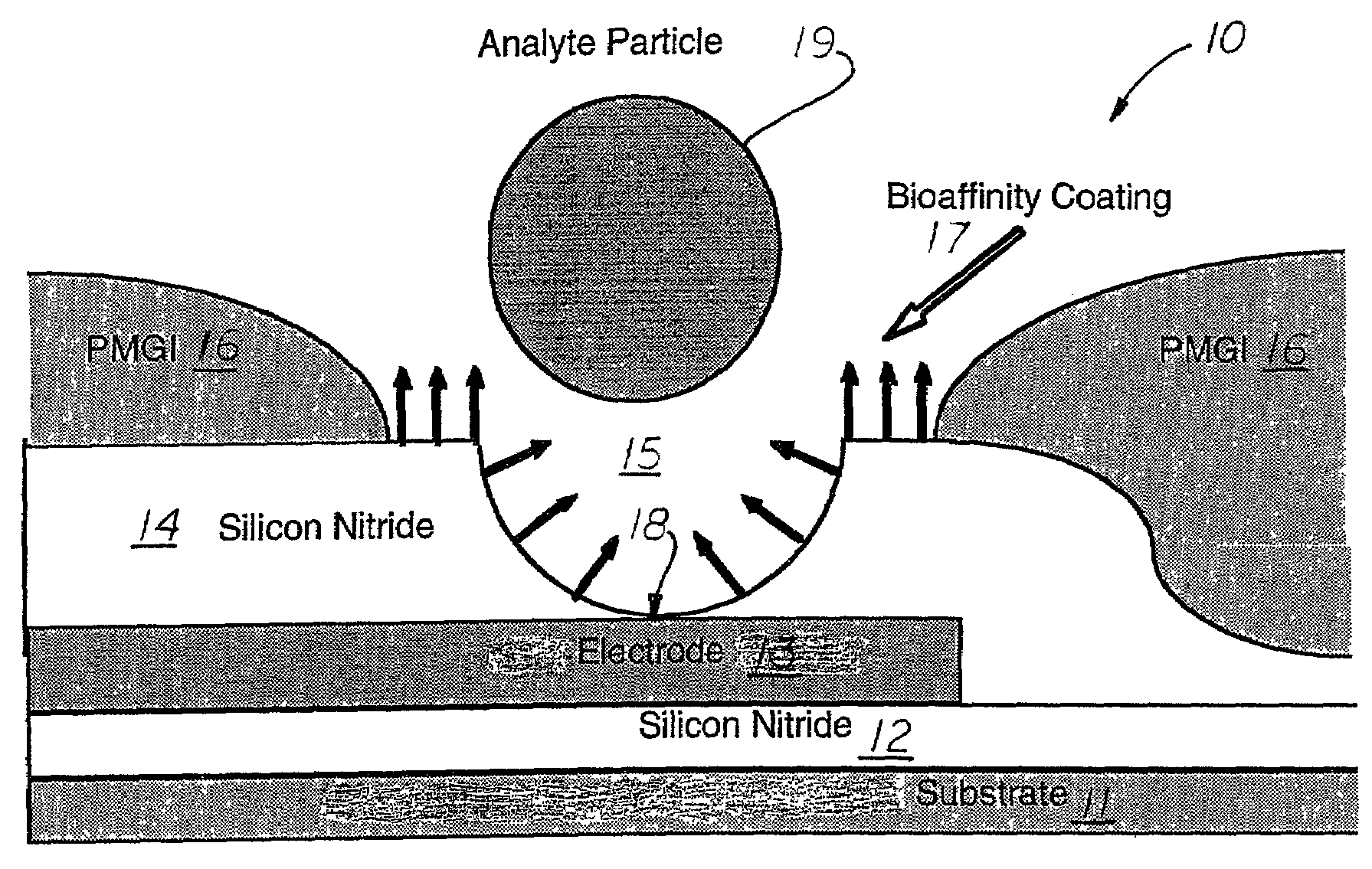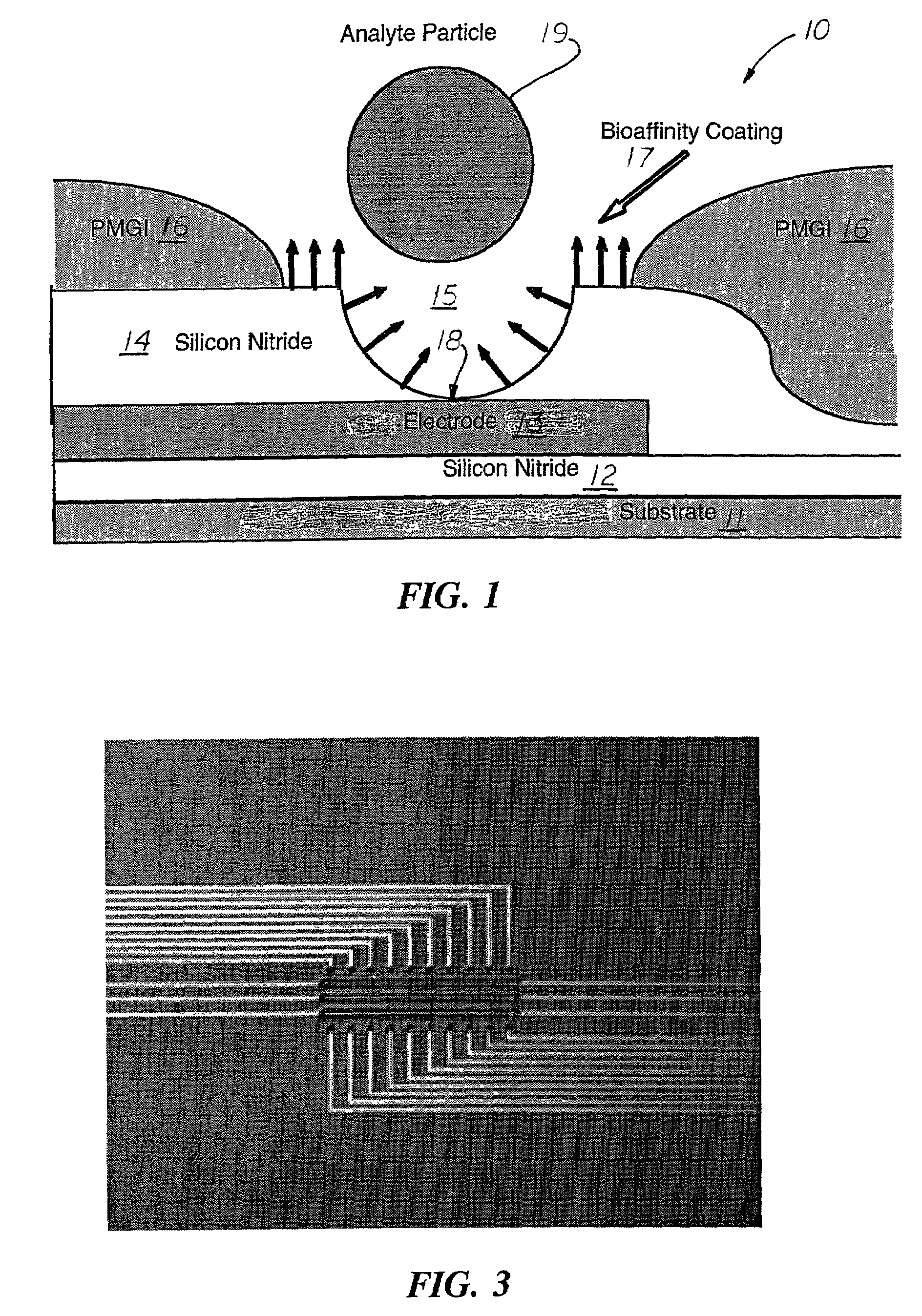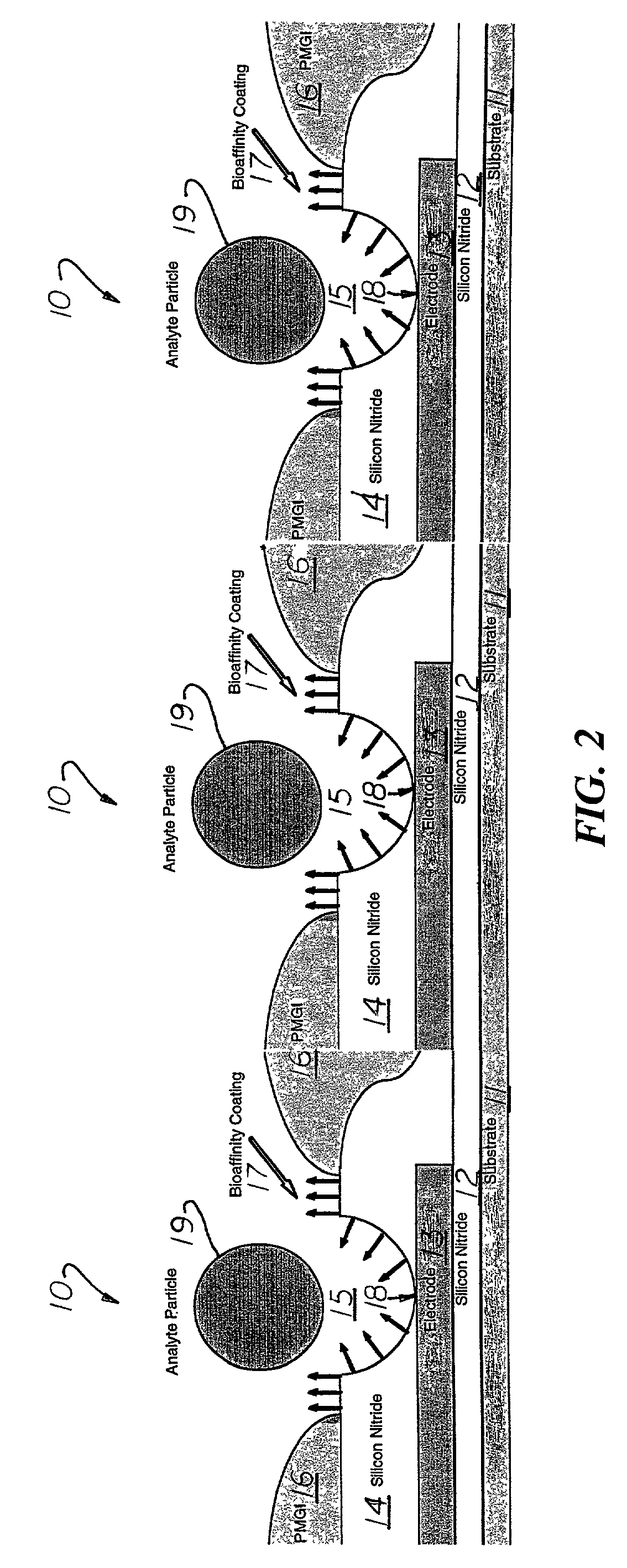Single particle electrochemical sensors and methods of utilization
- Summary
- Abstract
- Description
- Claims
- Application Information
AI Technical Summary
Benefits of technology
Problems solved by technology
Method used
Image
Examples
Embodiment Construction
[0031]The present invention, described hereinafter, involves devices for affinity-based electrochemical detection of particles with single-particle sensitively. The particles can be cells, bacteria, viruses, aggregates, immunocomplexes or molecules. The devices described may be employed as sensors or assays for a single type of particle, or for a range of particle types, and may be configured in arrays having both these attributes. Also described are methods for using these devices to achieve extremely high sensitivity and high specificity detection of specific particles. These devices and methods would generally be used as sensors for particles dissolved or suspended in a solution.
[0032]These devices and methods employ a surface-attached specific affinity components (e.g., antibodies, combinational peptides, glycolipids) to selectively capture a particle on elements of an array of single particle sensors. Such as array might contain a very large number of elements, or consist of ev...
PUM
| Property | Measurement | Unit |
|---|---|---|
| Thickness | aaaaa | aaaaa |
| Affinity | aaaaa | aaaaa |
| aaaaa | aaaaa |
Abstract
Description
Claims
Application Information
 Login to View More
Login to View More - R&D
- Intellectual Property
- Life Sciences
- Materials
- Tech Scout
- Unparalleled Data Quality
- Higher Quality Content
- 60% Fewer Hallucinations
Browse by: Latest US Patents, China's latest patents, Technical Efficacy Thesaurus, Application Domain, Technology Topic, Popular Technical Reports.
© 2025 PatSnap. All rights reserved.Legal|Privacy policy|Modern Slavery Act Transparency Statement|Sitemap|About US| Contact US: help@patsnap.com



